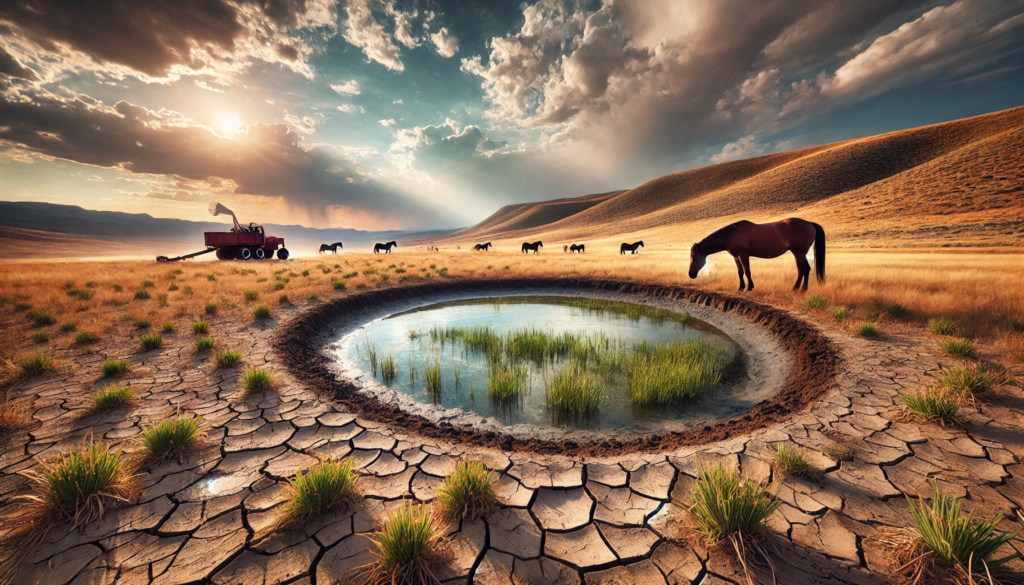Ranchers in Utah Draining Ponds from Horses
Utah is currently facing a severe drought crisis that has profoundly impacted water resources for horses and livestock.
This situation underscores the importance of balancing conservation efforts with agricultural needs.
I’ve seen firsthand how this delicate balance affects everyone involved—from ranchers trying to sustain their livelihood to the wild horses that roam the land.
The Role of Ranchers in Water Management
Ranchers in Utah have had to adapt their practices to manage water more effectively.
This often includes draining ponds to conserve water for future use.
Learn about the bay roan arabian horse rdr2 in Red Dead Redemption 2, including its location and how to tame it
Notable ranches have developed strategies that involve careful water management and conservation efforts, setting examples for others to follow.

Wild Horses and Ecosystem Strain
The Federal Wild Horse and Burro Program has been striving to manage overpopulation and limited resources.
With a growing horse population and dwindling water sources, the strain on the ecosystem is evident.
Find horse training near me and riding schools near you, like the Lahore Garrison Saddle & Polo Club in Lahore, Pakistan
Key statistics highlight the disparity between horse populations and available water, emphasizing the need for effective management strategies.
The Environmental Impact of Pond Draining
Draining ponds has significant effects on local flora and fauna. For instance, the aspen habitats in Monroe Mountain face challenges in sustainable grazing due to water scarcity.
Discover horse camp near me and equestrian centers near you, such as Japalouppe Equestrian Centre in Talegaon, Maharashtra
Government and Community Interventions
Policies by the Bureau of Land Management (BLM) and state wildlife agencies play a crucial role in managing this crisis.
The role of hunting and population control has also been a topic of debate, with some success stories emerging from collaborative efforts between agencies and ranchers.
These partnerships have shown that working together can lead to effective solutions.
Ethical Debates: Intervention vs. Natural Processes
There are varying perspectives on whether humans should intervene in drought management. Range specialists and conservationists often weigh in with differing views.
One notable case study involves the Green River District Wild Horse Herd, which has faced significant struggles due to water scarcity.
Here is a case study of Lara and her Horse. That was a world that you can explore and also seek information of bond of attraction between horse and human,
Innovative Solutions for Water Scarcity
Innovative solutions such as rainwater harvesting and reservoir development are being explored. Technology, including satellite tracking for resource monitoring, offers promising ways to address water scarcity.
Successful rancher-led initiatives in drought zones demonstrate that with creativity and determination, we can find solutions.
Challenges in Implementation
Conflicts often arise between ranchers, conservationists, and government bodies.
Public perception of wild horse protection versus agricultural interests also plays a role.
Economic and environmental trade-offs need careful consideration to ensure sustainable solutions.
Sustainable Ranching and Wildlife Management
The future calls for potential reforms in public land use and better integration of rancher experience with scientific research.
Predictions for long-term water resource management in Utah suggest that collaborative efforts will be key to overcoming these challenges.
Conclusion
In summary, the need for collaborative solutions to manage water resources in Utah is critical. Engaging all stakeholders in water conservation efforts can help ensure a sustainable future for both agriculture and wildlife.


